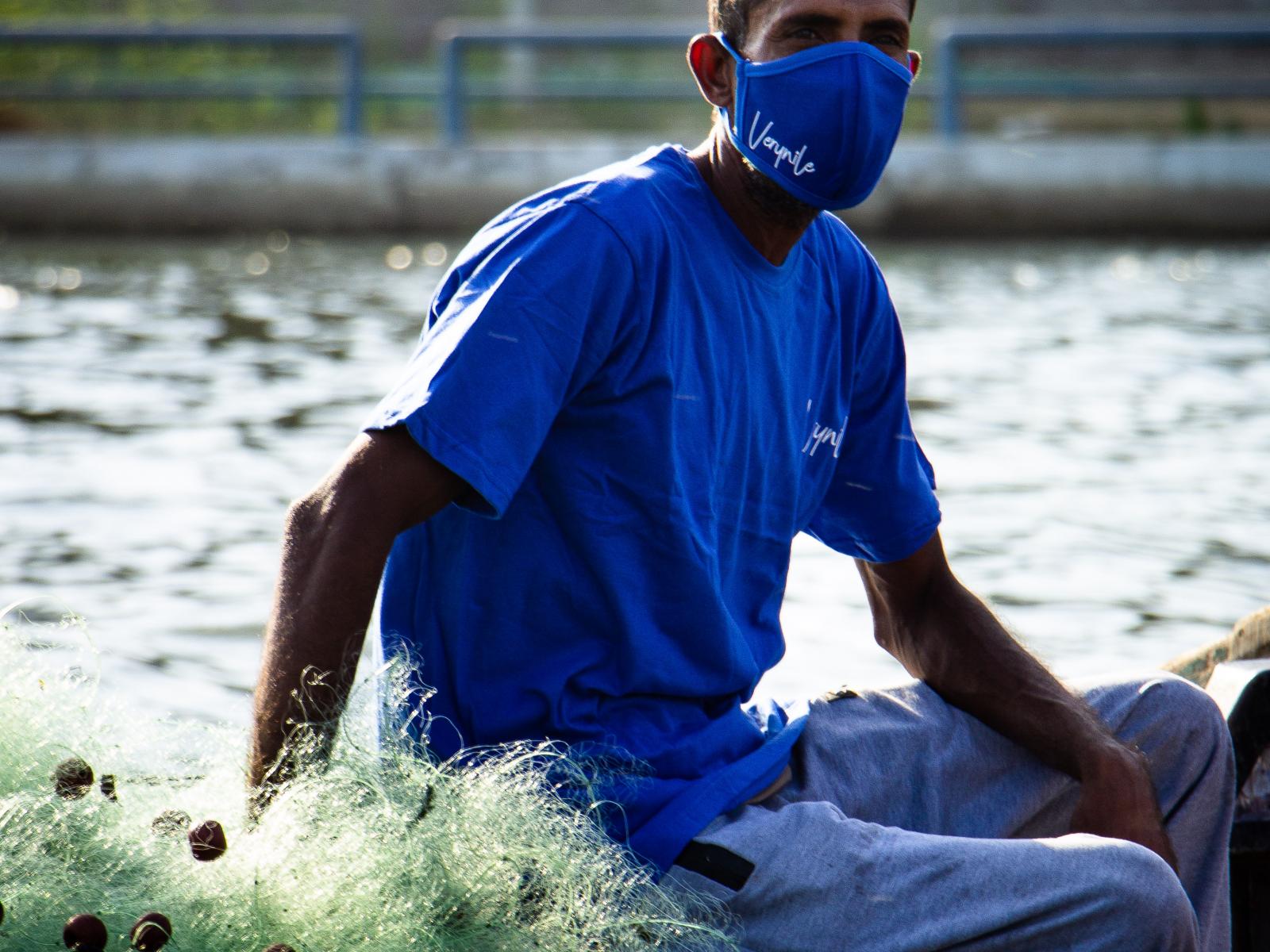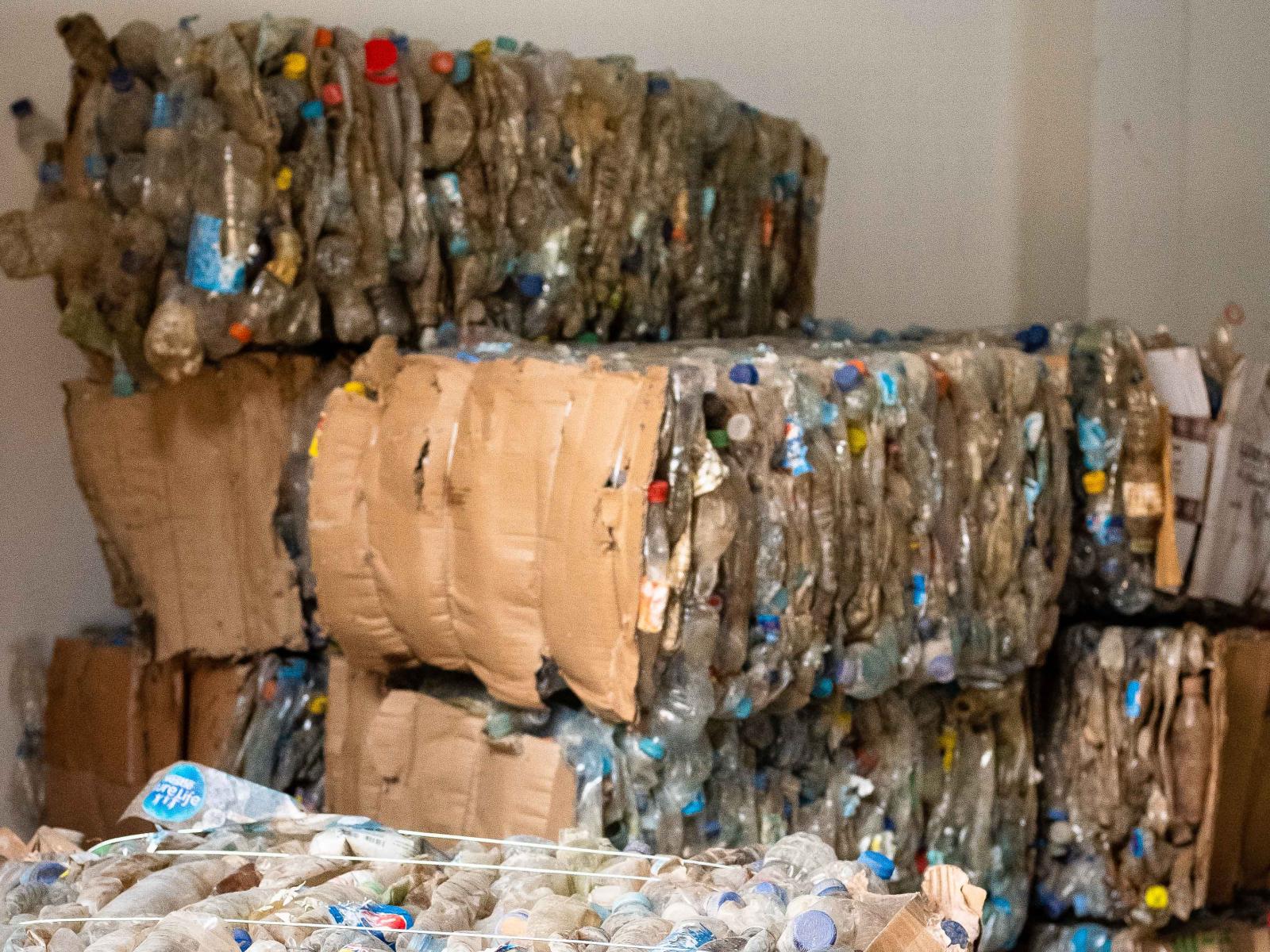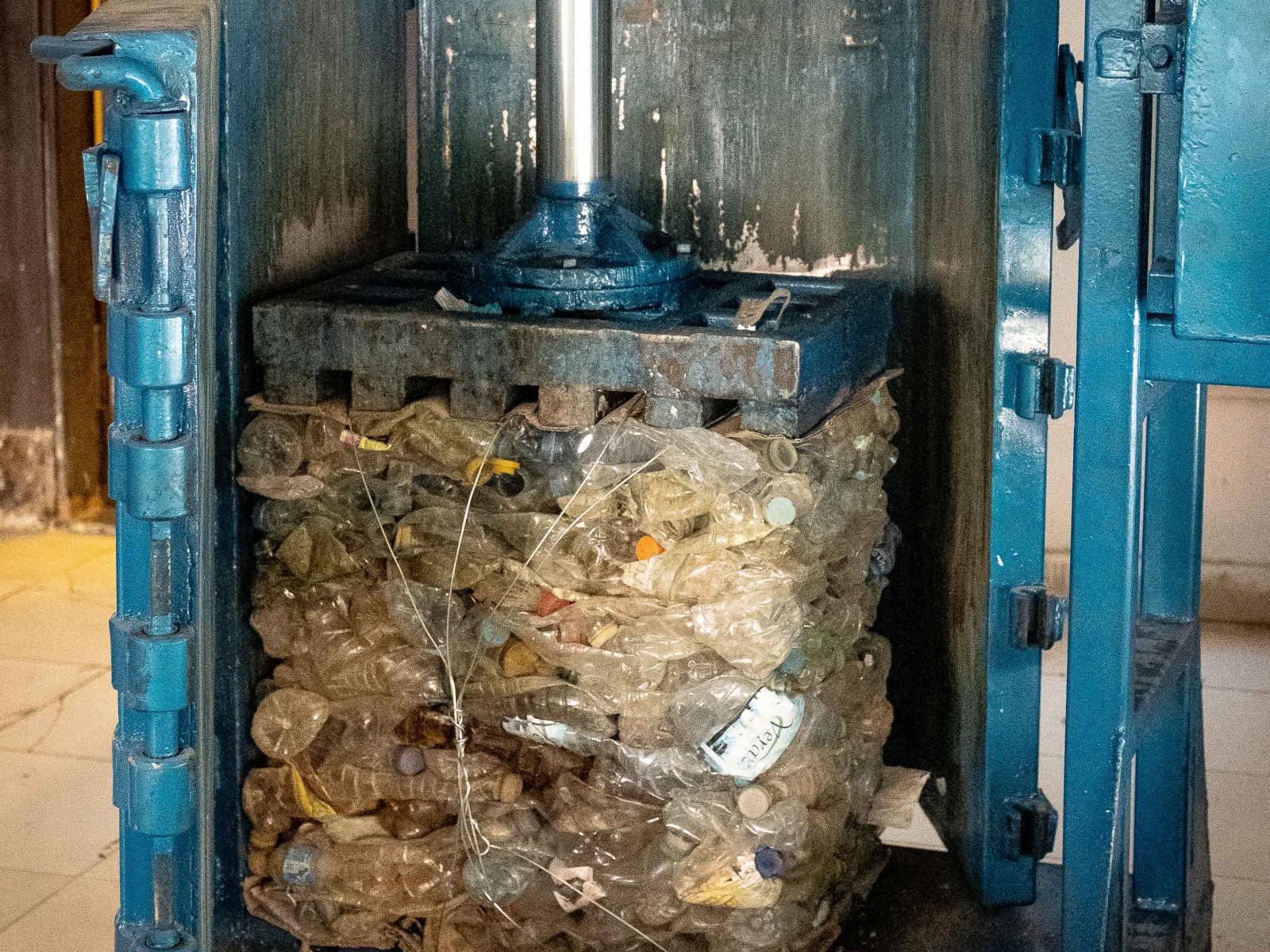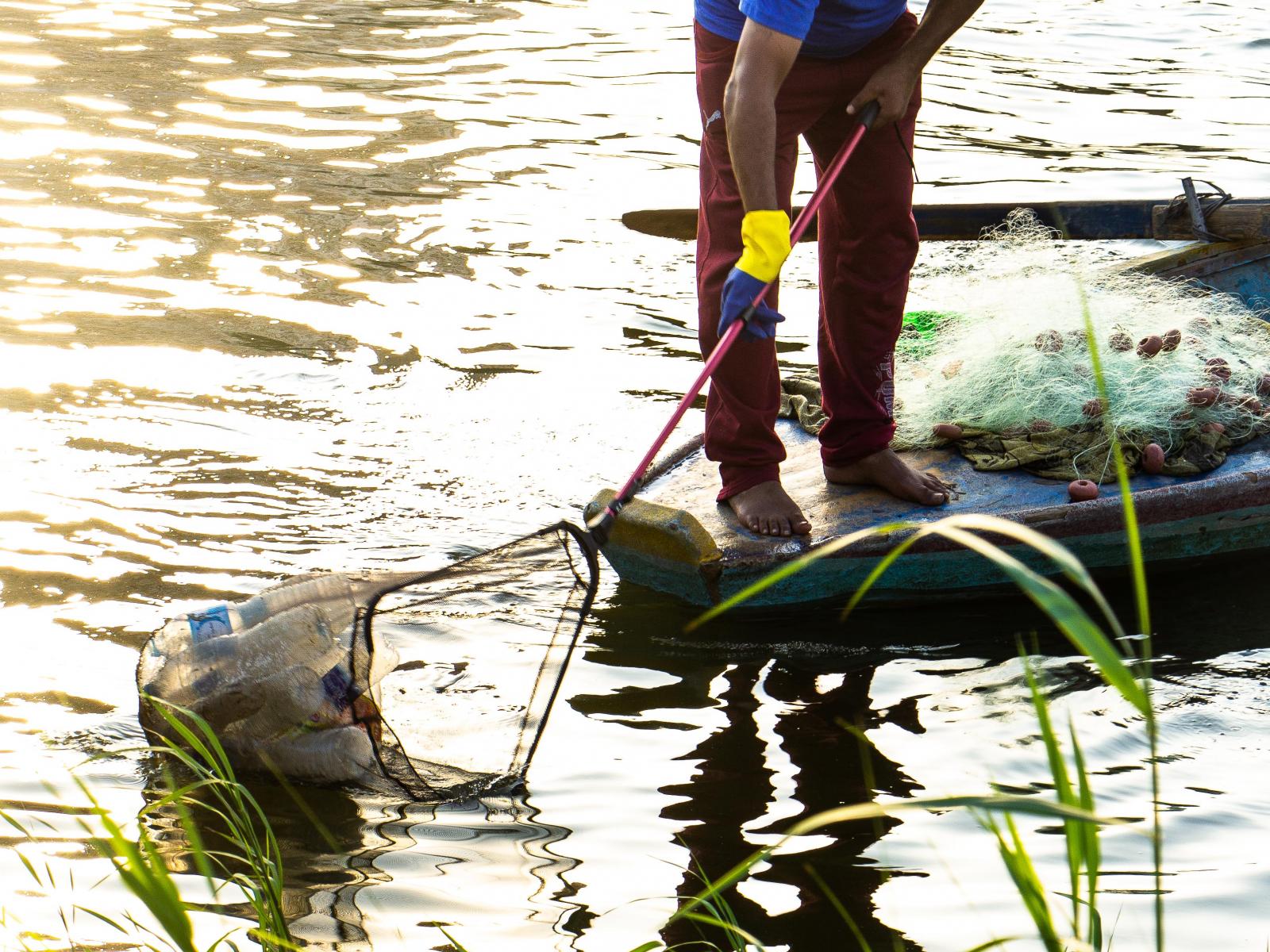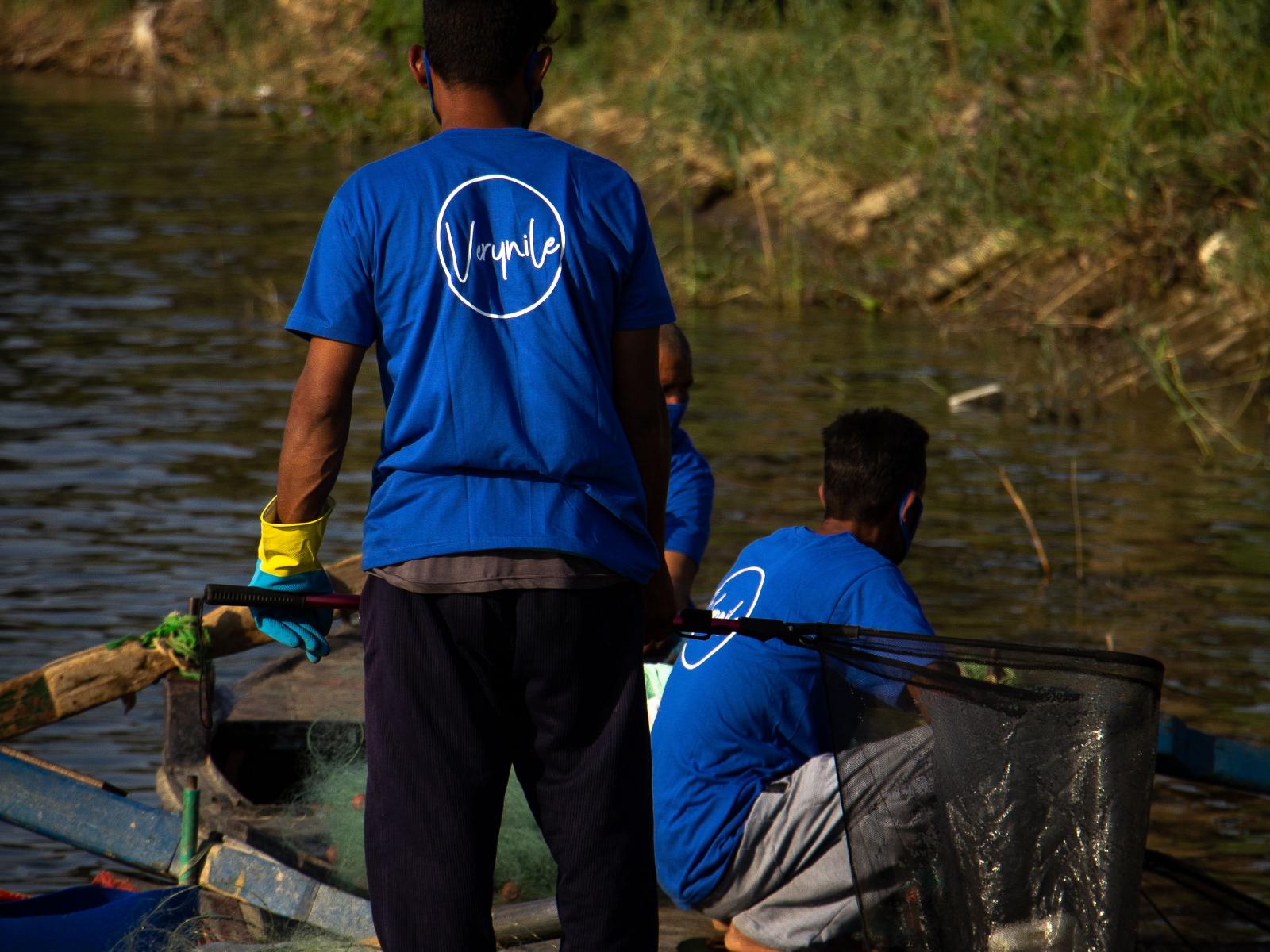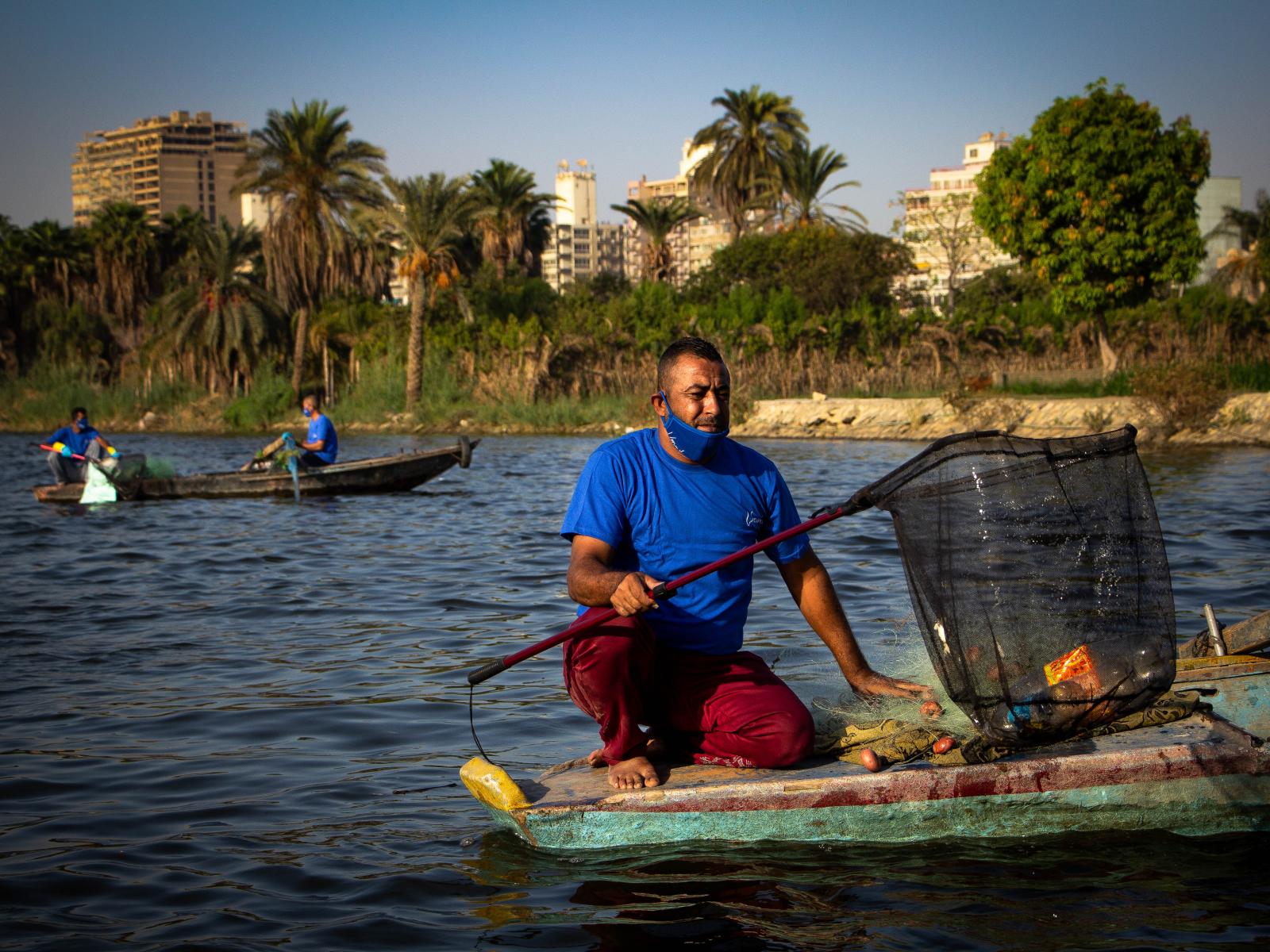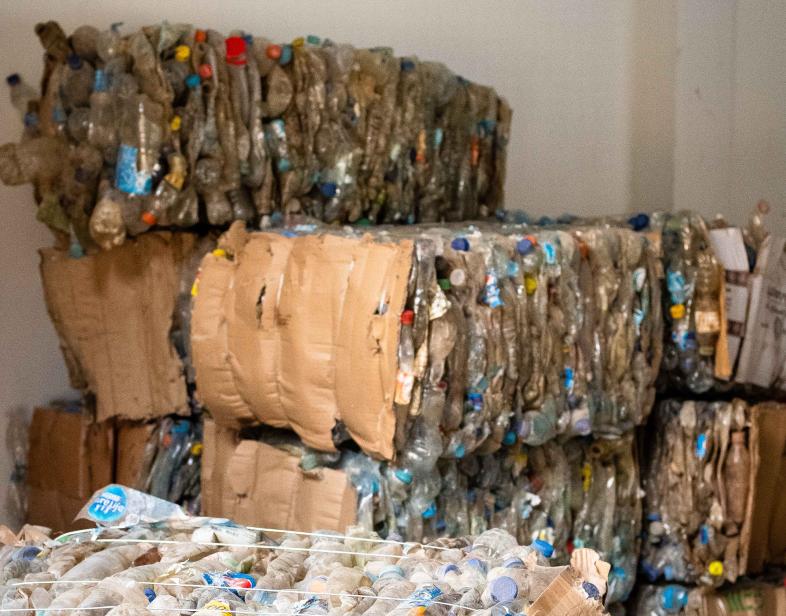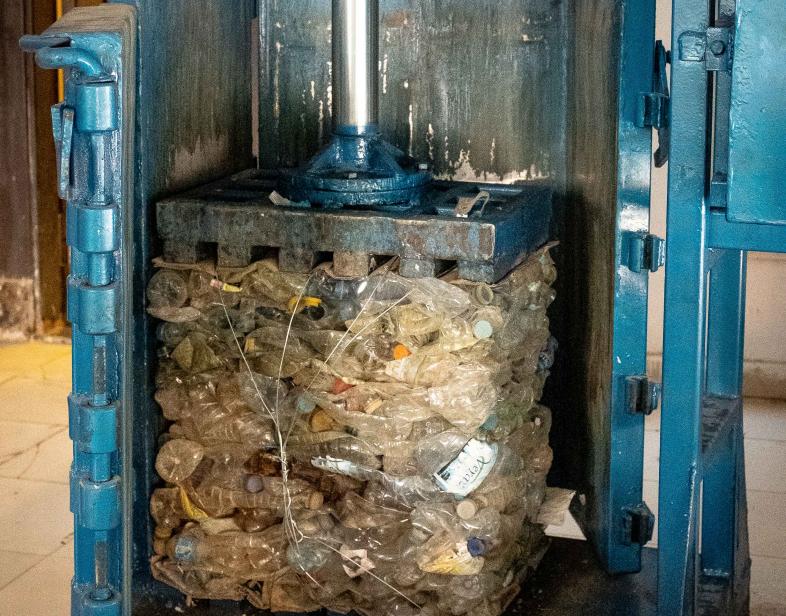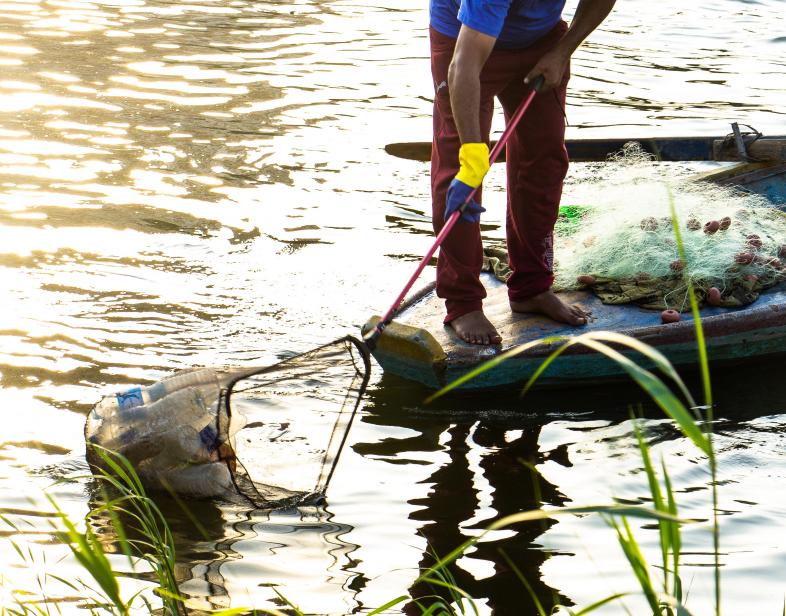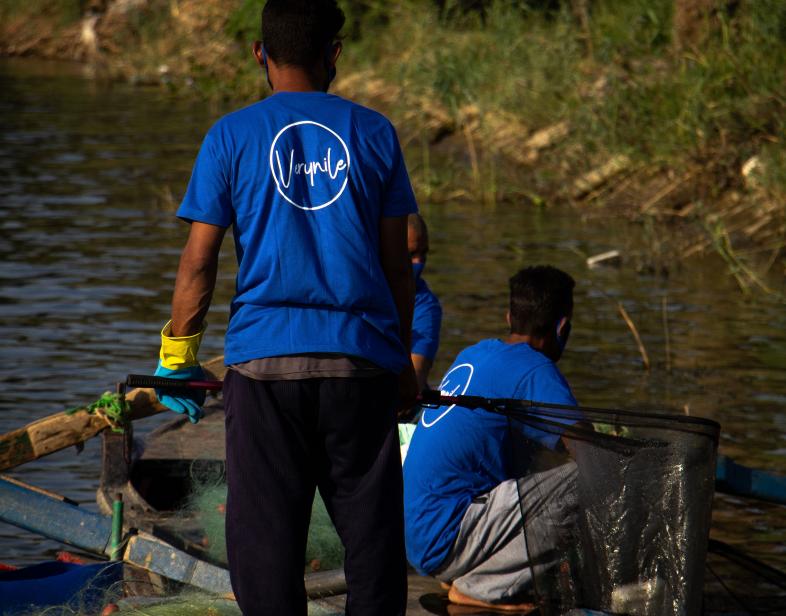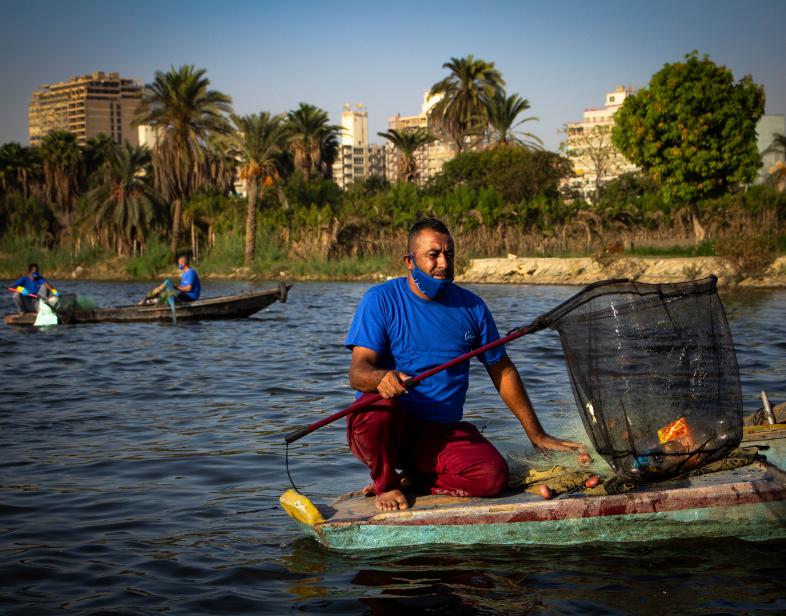An Overview Of Our Solution
VeryNile is the first youth-led initiative to clean the Nile on an ongoing basis. VeryNile aims to get rid of the visible pollution on the Nile by 2030 through raising awareness on protecting the environment and by creating innovative tools and models to remove marine litter with a focus on plastic.
Recently, VeryNile developed a project aiming to change the behavioral approach of 15 fishermen (and by extension their families) towards to environment. The project takes place on the environmentally and socially underprivileged island of Qursaya in Cairo, which has a major waste management problems. The project is based on the idea of valorizing recyclable garbage in order to improve its collection and disposal, while economically empowering a low-income community. The project incentivizes participating fishermen and families through financial and social support.
- Population Impacted: 15 fishermen direct beneficiaries and their families
- Continent: Africa
First name
Last name
Organization type
Context Analysis
According to the WEF, the Nile is one of 10 rivers that contribute 90% of the garbage in the world’s oceans. By cleaning the Nile and preventing more pollution, this project has both a local and global impact. VeryNile chose to implement operations of this project on Qursaya island, located in the Giza area of central Cairo. The island is populated by low-income farmers and a marginalized community of fishermen. It has no proper waste management system, which has led to the accumulation of solid waste pollution both on the island and areas surrounding it. This creates health issues for the island inhabitants as well as environmentally harmful practices such as burning garbage, which affects the health of the local population. For fishermen on Qursaya, there is little access to public health services or environmental awareness material. Fishing has been severely affected by the growing amounts of pollution in the Nile, further threatening the fishermen's livelihoods and income.
Describe the technical solution you wanted the target audience to adopt
VeryNile aims to change the behavioral habits of Qursaya island residents through environmental awareness and education covering technical information on plastic vs biodegradable waste, the effects of waste on marine life, and the economic value of recyclables (both in the household and littered in the Nile). This takes place through the implementation of environmentally educational workshops on the island, based at the Fishermen Hub (a center which serves as community hub and waste segregating facility). Once fishermen are empowered with this information, they are keen to collect plastic waste from the Nile, and are paid a premium price per/kg of collected recyclables.
To make this project sustainable and to replicate and scale it elsewhere, collected recyclables are sold to recycling agencies. VeryNile is currently in the process of developing collaborations with various sectors to begin integrating Nile recyclables into new upcycled and recycled products.
Describe your behavioral intervention.
VeryNile is creating a new environmental community on Qursaya island. It has met with various island inhabitants and created surveys and interviews to better understand their needs and tailor the project accordingly. The project is both socially and environmentally empowering.
To socially support and incentivize the community to transform their habits, VeryNile economically empowers the fishermen by paying a premium price for collected plastic which goes towards supporting their families. It also provides in-kind donations to participants from various private sector sponsors. To enhance the collection process, VeryNile revamped their fishing boats, and provided garbage collection tools to all participating fishermen to make the collecting safer and more efficient. Fishermen take part in environmentally educational workshops which explain VeryNile's model for transforming the area.
After learning about the impact of solid waste pollution, fishermen change their waste disposal habits, and instead drop off household recyclables at the Fishermen Hub. They understand the economic value of plastic waste as well as its negative impact on marine life (and therefore fishing), agriculture, public health, and environmental resources (soil and water). They are taught how to compact the plastic they collect to make storing and transporting more sustainable. This creates a new system of waste understanding, disposal, and management on the island.
Behavioral Levers Utilized
As needed, please explain how you utilized the lever(s) in more detail.
VeryNile used a number of levers for behavioral change to target the 15 fishermen partners:
- Emotional Appeals: VeryNile created posters with statistics and facts about the effects of plastic waste on the marine environment. Fishermen were responsive to this information because their livelihoods had been affected in recent years by the rising amount of pollution and the declining availability of fish.
- Material Incentives: Participating fishermen are paid a premium price (3x the market price for PET plastic) for every kg of recyclables they drop off at the Fishermen Hub. They are also provided with in-kind donations from VeryNile's partners, such as school notebooks and homeware items.
- Information: Fishermen learn more about the environment and how to protect it through VeryNile's workshops covering the types of plastic, how waste can(not) be biodegraded, etc.
- Social Influences: VeryNile has the vocalized support of the Egyptian Minister of Environment.
Describe your implementation
The project has been implemented since December 2019, and has continued to grow at an increasing rate. VeryNile currently collects an average of 100 kgs of plastic recyclables from the Nile daily with the help of its 15 participating fishermen. VeryNile implemented primary research on Qursaya island to analyse the context of its waste management system as well as the behaviors of its inhabitants. VeryNile also conducted interviews and surveys with fishermen on the island in order to better understand the social and economic needs of the community, to assess the level of environmental awareness in the community (which was found to be quite low), and their preferences for interacting with the project (most convenient times for workshops, preferred tools, etc).
VeryNile ensured that the solution was adopted by establishing a presence on the island and a headquarters for the project. VeryNile currently has a large space on Qursaya island (the "Fishermen Hub") which acts as a drop off point for our 15 fishermen partners, as well as a compacting space. Three full time VeryNile team members work at the Hub to oversee the delivery of recyclables every day as well as the compacting of the plastic. The Hub has a huge outdoor roof area in which environmental workshops take place (this is in accordance with COVID19 health and safety regulations). The Hub is always open for island residents to visit, inquire, and benefit from the model and its financial incentives. The project raised more awareness due to significant media coverage.
This project has thus far removed approximately 5,5 tons of garbage from the Nile, and the surrounding areas of the island are visibly cleaner. The outbreak of the current pandemic posed a significant obstacle to this project, but a new system was quickly developed and put in place to ensure the safety of all participants (more frequent and spaced out shifts, moving all activity outdoors, providing mandatory masks, gloves, and safety equipment).
Describe the leadership for your solution. Who is leading the implementation?
VeryNile is an initiative created in December 2018 by the Egyptian social enterprise Bassita.
The team of 6 persons is mostly comprised of youth (less than 30 years old), supervised by the two co-founders of Bassita.
The team includes a mix of Egyptian and non-Egyptians, speaks 4 languages (Arabic, English, French and Swedish) and has diverse educational background (Finance, Philosophy, Management, Political Science...). Lastly, the team is gender balanced.
The following are the main positions in the team:
Alban de Menonville - Managing Director, oversees all VeryNile operations and communications with partners.
Salem Massalha - VeryNile co-founder and Operations Manager based on Qursaya island.
Mona Elkateb - Project Manager, handles communications and partnerships
Hani Fawzy - Program Manager and Space Manager of the Fishermen Hub, based on Qursaya island
Hanaa Farouk - Procurement Manager for the project.
Share some of the key partners or stakeholders engaged in your solution development and implementation.
The project is implemented in collaboration with multiple stakeholders from all sectors of the society. VeryNile believes that all sectors have an accountability towards the environment and that fostering multi-sectoral collaborations can combine the most diverse resources and expertise for the most effective impact. VeryNile has partnerships with the following entities:
The Egyptian Ministry of Environment - The project is implemented through a formal partnership with the Ministry of Environment, enabling VeryNile to advocate for policy change through direct contact with the Minister, Dr Yasmine Fouad. The Ministry supports VeryNile in obtaining necessary authorizations and permits for its activities and events.
Drosos Foundation - Drosos Foundation is a Swiss NGO is financially supporting the project and is bringing technical support through trainings and workshops with the team.
Nestlé Egypt - As one of the biggest producers of plastic bottles in Egypt, the involvement of Nestlé in the project allow us to advocate for more eco-friendly and recyclable packaging. It ensures the project has a direct impact at the source by making the "polluters" commit to remove at least part of what they produce.
Foundation of the Prince of Monaco (BeMed) - BeMed provided support in the form of funding to jumpstart the initial phase of this project.
The project also involves: recycling facilities, water sport clubs, Egyptian NGOs and private companies.
Who adopted the desired behavior(s) and to what degree? Include an explanation of how you measured a change in behavior.
If we are noticing direct and indirect impacts, indirect impact is more challenging to measure. It includes however awareness raising to the general population through the publication of content related to the problem and the solution through media articles and interviews, as well as through social media. It includes also continuous advocacy for policy change at the institutional level.
The direct impact is measurable on the community involved in the project:
Through pre and post evaluation the behavior change of the fishermen is clearly noticeable. Before the trainings, 100% of the fishermen did not consider plastic as pollution. None considered plastic as a potential threat to water quality. As a result, all plastic packaging used by the fishermen were disposed in the Nile.
Following a series of trainings and workshops, 100% of the fishermen understand water pollution as the presence of any elements resulting from human activities in water bodies.
How did you impact water pollution? Please be specific and include measurement methodology where relevant.
The impact on water pollution is twofold. However, if removing plastic is easily measurable, the prevention impact leading toward less waste being disposed in the Nile is more challenging to measure.
The project already removed 5,5 tons of PET from the Nile River. All collected plastics are weighted, segregated and compacted at the Hub before being sent to recycling facilities in Egypt.
The impact on the community of Qursaya Island (250 families are living on the Island) is only identifiable through pre and post visual assessments. It is noticeable that the amount of plastic waste on the shores of the Island has decreased by 30 to 50% during the last 6 months. However, the water level variations (+/- 80 cm depending on the season) and the current it creates are affecting the visual observations and have to be taken into consideration.
How has your solution impacted equity challenges (including race, gender, ethnicity, social class/income, or others)?
Local fishermen are a marginalized and underprivileged community, and therefore are stigmatized by the general population. Most of them do not have access to a stable source of income, formal employment or healthcare. the project provides them with formal employment, decent working and living conditions and provide access to free medical services on a regular basis.
Through the project, fishermen are beginning to be considered by the media and the general population as a green army which aims is to protect the natural resources of Egypt. For instance, pictures of fishermen cleaning the Nile have reached 750,000 users on Facebook. As a result, the project has been showcased during one of the most popular Egyptian TV shows, reaching an estimated audience of 7 millions persons, further challenging the negative perception of local fishermen by the general population.
The project is gender-balanced.
What were some social and/or community co-benefits?
aThe project integrate partners and extra activities that contribute to the empowerement of the community living on Qursaya Island:
1. 5 women from the island are now employed to create accessories with recycled plastic bags.
2. 20 youth from the island have been involved in the renovation of a house during a two days event.
3. 100 blankets have been distributed through a collaboration with the Egyptian Clothing Bank.
4. 100 notebooks and pens have been distributed to the children (Mintra)
What were some environmental co-benefits?
As previously mentioned, the Nile is one of 10 rivers that contribute 90% of the garbage in the world's oceans. Moreover, due to its huge waste management problem, Egypt is the second more polluting country to the Mediterranean Sea. Thus, this project has a local impact (cleaning the Qursaya island area and the surrounding area in central Cairo), a regional one (by limiting the garbage entering the Mediterranean Sea), as well as a global one (by limiting the garbage entering the ocean).
What were some sustainable development co-benefits?
This project has both a social and environmental impact (it empowers the local underprivilaged community of fishermen while simultaneously having a positive environmental impact). This creates an added value for the collected plastic which allows it to be sold at a premium price on the market. Profits from such transactions will be reinvested into the project to recruit more fishermen and collect more plastic, as well as developing new and more efficient mechanisms for expanding the project.
Sustainability: Describe the economic sustainability of your solution.
The objective of the project is to be financially self sustainable by the end of 2022. To achieve financial sustainability, significant investment have been made and are still needed. They include: renovation of the fishermen boats, segregating and compacting equipment, renovation of the Hub, license and authorizations, R&D (valorizing the collected PET)...
These cost are now covered by grants and donations from the private sector.
The sustainability will be progressively achieved through the valorization of the collected plastic, through the promotion of its social and environmental impact. The project is working on the implementation of an "Ethical Plastic" label for high margin products.
Return on investment: How much did it cost to implement these activities? How do your results above compare to this investment?
One of the objectives of the project is to build a low cost water cleaning model. All in all, the cost of removing 1 ton of plastic from the river is estimated at 1,150 euros. This cost include the operating expenses and the initial investment over a 5 years period. It takes into account all social benefits of the project.
How could we successfully replicate this solution elsewhere?
All over the world, fishermen are becoming more involved in the protection of water bodies. In Barcelona, fishermen segregate the different kinds of plastic the collect while using their fishing nets and bring them back to be recycled.
In developing countries, the context is very similar to the one described in this project. The initial investment does not require any specific or expensive equipment. The need evolves around: access to a sorting facility (with rooms for trainings), access to fishermen communities, partnerships with recycling facilities and fashion brands.
Replicating a similar project in the Egyptian context would require an estimated 43,000 euros to cover all costs for the first year.
